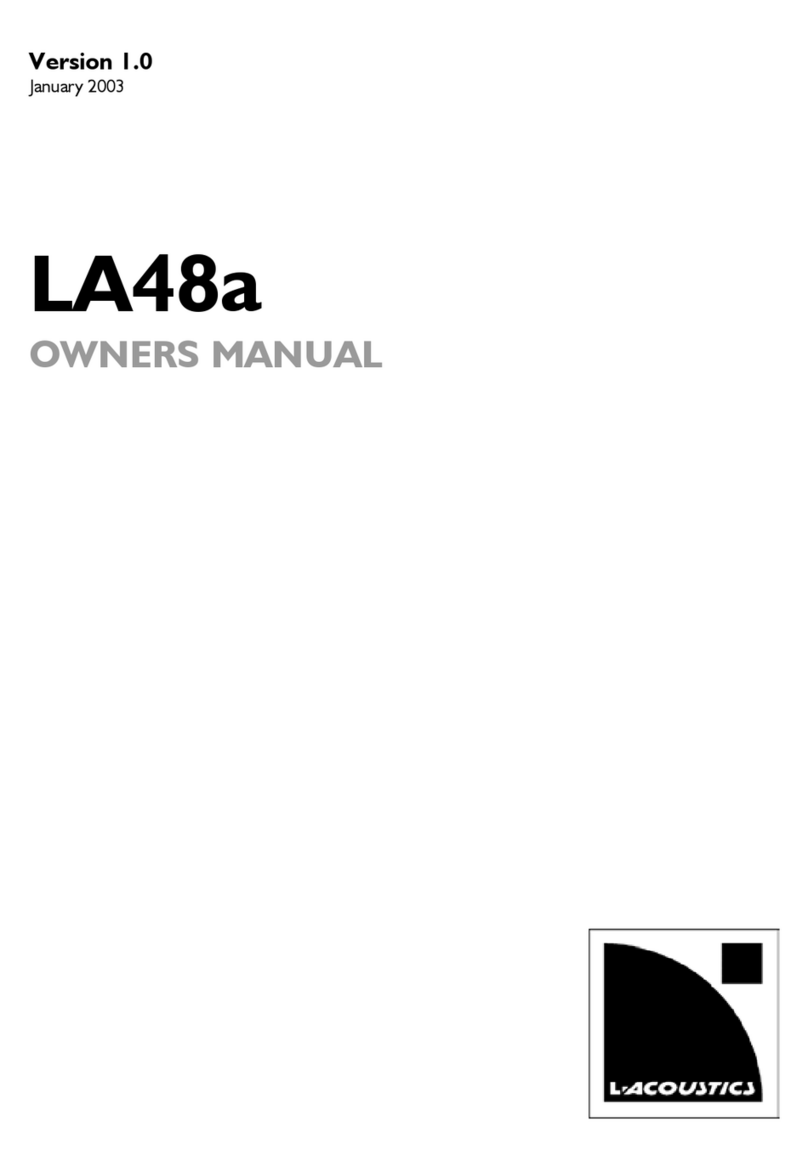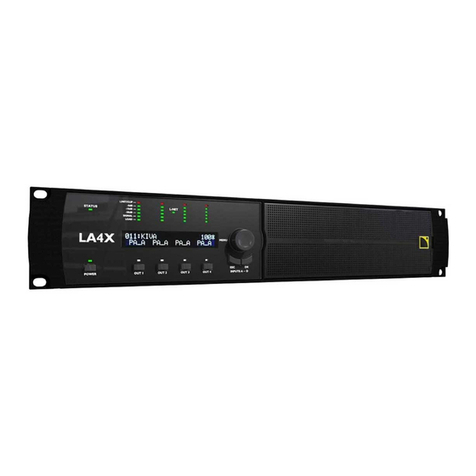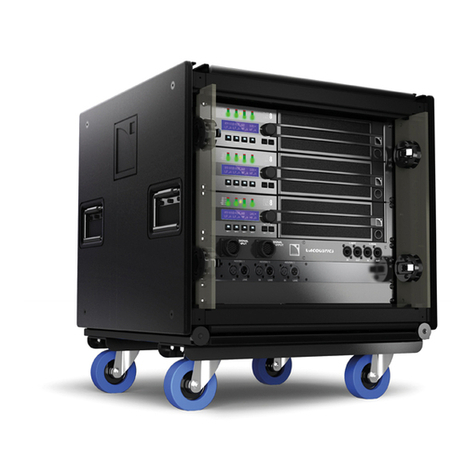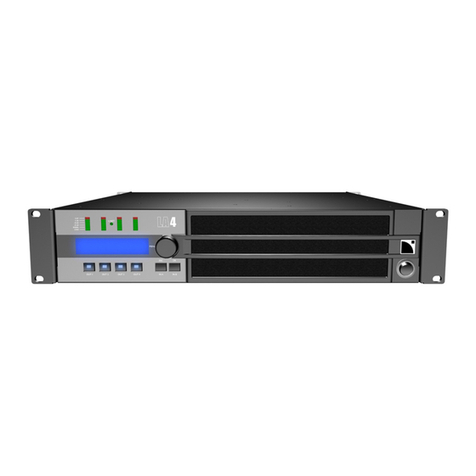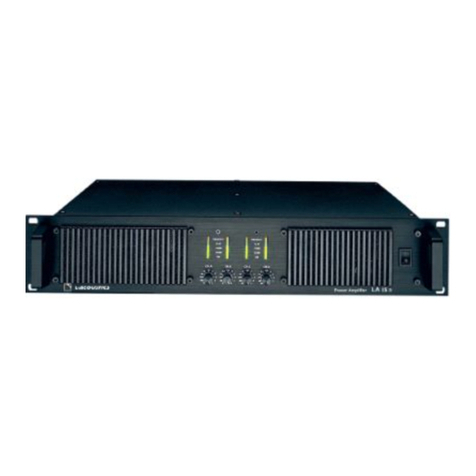
L-ACOUSTICS V-DOSC Manual Version 4 6/29/2005 Page 9 of 158
Figure 51: SOUNDVISION Geometric Data for V-DOSC ............................................................................. 77
Figure 52: Plan view SPL mappings at octave band frequencies for 12 V-DOSC ...........................................78
Figure 53: Impact coverage and SPL mappings for 12 V-DOSC .....................................................................79
Figure 54a: Stadium example - rear perspective view of full system impact coverage ...................................80
Figure 54b: Stadium example - plan view of full system impact coverage ......................................................80
Figure 55: Stadium example - rear perspective view of 1-10 kHz SPL Mappings...........................................81
Figure 56: Arena example -rigging plot ...........................................................................................................82
Figure 57: Arena example - plan view of full system impact coverage............................................................82
Figure 58: Arena example - rear perspective view of full system impact coverage ........................................83
Figure 59a: Arena example - rear perspective view of full system SPL map (1-10 kHz) ................................83
Figure 59b: Arena example – plan view of 1-10 kHz SPL mappings ...............................................................84
Figure 60: Illustration of Stacking Guidelines...................................................................................................86
Figure 61: Stacked system example................................................................................................................. 86
Figure 62: Illustration of flying guidelines.........................................................................................................87
Figure 63: Flown V-DOSC System..................................................................................................................87
Figure 64: Tradeoffs between intelligibility versus stereo imaging..................................................................89
Figure 65: LCR Configurations ........................................................................................................................89
Figure 66: Generic rigging plot for a V-DOSC system with main L/R FOH and LL/RR offstage fill arrays...... 90
Figure 67: Rigging plot for a L/R V-DOSC + flown SB218 system with LL/RR dV-DOSC offstage fill. .......... 91
Figure 68: Stereo dV-DOSC offstage fill system. ...........91
Figure 69: Flown V-DOSC and ground stacked subwoofer configurations ....................................................93
Figure 70: Flown V-DOSC and ground stacked subwoofer time alignment ................................................... 93
Figure 71: Time alignment location for flown V-DOSC, ground stacked L/R subwoofers ............................. 94
Figure 72: Physically coupled subwoofer configurations ................................................................................. 95
Figure 73: Hybrid flown/stacked subwoofer configurations............................................................................96
Figure 74: Hybrid flown/stacked subwoofer example ....................................................................................96
Figure 75: L/R Subwoofer arraying techniques................................................................................................98
Figure 76: Centre subwoofer line array (a) without and (b) with electronic delay processing.......................99
Figure 77: Electronic delay processing examples using a 4- or 6-channel DSP............................................. 100
Figure 78: LCR Subwoofer arraying techniques ............................................................................................101
Figure 79: Large format subwoofer configuration with electronic delay processing ....................................102
Figure 80: Geometric coordinates for the SUB ARC utility spreadsheet in ARRAY2004 .............................103
Figure 81: Large format arena configuration – 4 delay taps ..........................................................................103
Figure 82: Large format open air festival configuration................................................................................. 104
Figure 83: Large format stadium configuration ............................................................................................104
Figure 84: Stereo infill and distributed front fill options ................................................................................105
Figure 85: Flown offstage fill system options.................................................................................................106
Figure 86: Stacked offstage fill system options ..............................................................................................106
Figure 87: SOUNDVISION simulation for a LL/L/R/RR V-DOSC FOH system with 4 delay positions ........ 107
Figure 88: Flown and stacked delay systems.................................................................................................108
Figure 89: Stacked dV-DOSC delay system ..................................................................................................108
Figure 90: Flown V-DOSC delay system.......................................................................................................108
Figure 91: Stacked V-DOSC offstage fill system............................................................................................ 111
Figure 92: SOUNDVISION mechanical data.................................................................................................112
Figure 93: SOUNDVISION installation report data ......................................................................................113
Figure 94: ARRAY 2004 installation data .......................................................................................................113
Figure 95: Photo sequence showing the steps involved in flying V-DOSC ...................................................119
Figure 96: Recommended Installation Tools .................................................................................................131
Figure 97: V-DOSC Enclosure – Line Drawing ............................................................................................. 133
Figure 98: SB218 Subwoofer – Line Drawing................................................................................................134
Figure 99: V-DOSC Flying Bumper – Line Drawing......................................................................................135
Figure 100: SB218 Flying Bar – Line Drawing ...............................................................................................136
Figure 101: The Interference Problem..........................................................................................................142
Figure 102: Comb filtering due to path length differences between sources ............................................... 143
Figure 103: Destructive interference ring for a line array at observation point M........................................144

